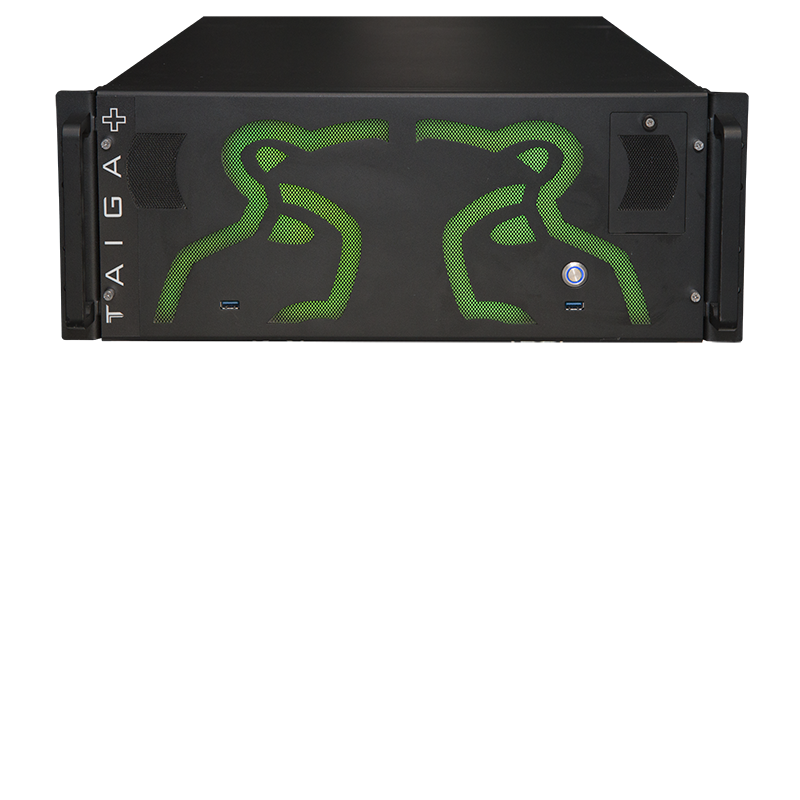
Before founding Green Hippo in 2000, co-owners Sean Westgate and James Heron had been working in corporate AV when they came across an exciting opportunity to work with VJ equipment in nightclubs. A few years later, in 2005, they were joined by Nigel Sadler who, at the time, was exploring the possibilities of working with computers to control media.
“I wanted to promote the use of a computer-controlled media system for theatre,” recalls Sadler, “but at the time, nobody really understood that there might be a market for this sort of thing, so I tried to write a media server myself, and failed miserably. Realizing that my programming skills were just not up to the task, I went on the hunt for existing video processing software that could be molded to suit my purpose.”
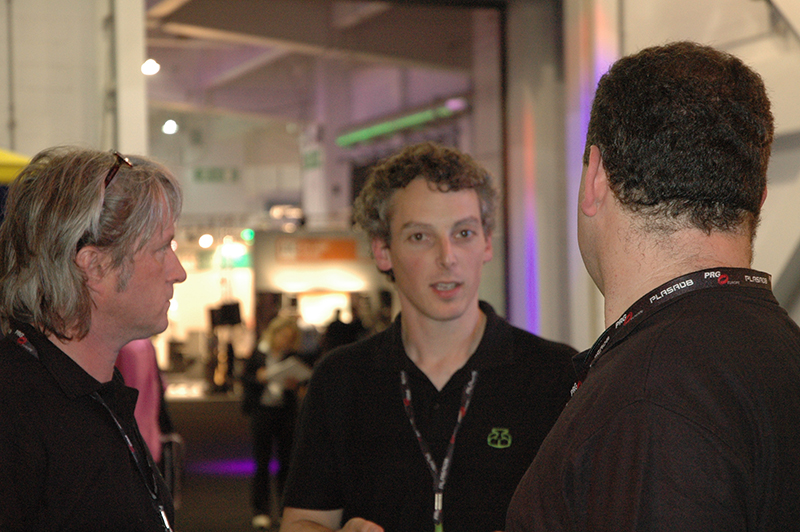
During his search, Sadler met Joshua Honger, the creator of Visual Jockey, which was one of the fastest and most flexible VJ/ Animation software on the market. Honger pointed Sadler in the direction of two guys in London who had already started to create products with his VJ engine.
“From what Sean and James have told me since,” laughs Sadler, “I believe that after that initial meeting they thought that I was a bit mad, and that they would probably never see me again. For their part, although neither Westgate nor Heron had any experience with lighting consoles at the time, they realized there could actually be something in this idea of linking video and DMX.
Together, these three visionaries launched Green Hippo as it is known today. For more on how that was accomplished, read on.
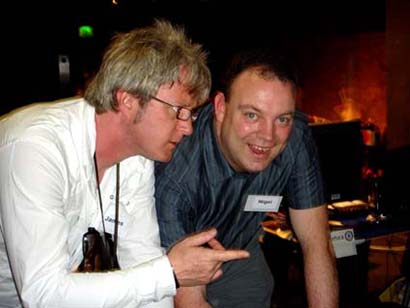
Beginnings and Milestones
The first versions of Hippotizer were written to run entirely on the CPU and as such were very limited in resolution (384 x 288) and what they could do. Green Hippo’s first big milestone came when the engineering team, made advances in both software and hardware enabling them to process everything on the GPU instead. This significant change in processing meant they were able to produce a machine that could output greater resolutions like 1024 x 768. Additionally, with the launch of their first dual output machine, Hippotizer sales really started to take off due to the fact customers only had to buy half the number of machines.
Green Hippo’s first big break came when a friend and producer Scott Burges approached them. He wanted a media playback solution for the new Mary Poppins production he gearing to go into London’s West End later that year. The buzz and the publicity created around Green Hippo and that production was the first really big step that led to more work in the West End and then later in Broadway with their partners at the time, Scharff Weisberg (now WorldStage).
Energized with that success, Westgate, Heron, and Sadler developed what became their flagship product; Version 3 of Hippotizer, which has stood the test of time as a market-leading product. Ten years later, there are still hundreds of shows and installations that run on V3.
“When we launched Version 3 of Hippotizer, it was revolutionary on so many levels. We had a very friendly customizable interface and the concept of a remote user interface so that the servers could be put backstage with just a simple laptop at front of house for control. I think it is safe to say that it was the product that truly molded Green Hippo as a company,” points out Sadler.
“I think by far the moment that most of us at Green Hippo will remember is our first time doing the Academy Awards Show (a.k.a. the Oscars) back in 2011, with Jason Rudolph and the team at SenovvA and VER. We have been very lucky to have done it every year since, but that first one was really special, there really is nothing like that show to really make you think how far you have come from your early beginnings,” Sadler continues.
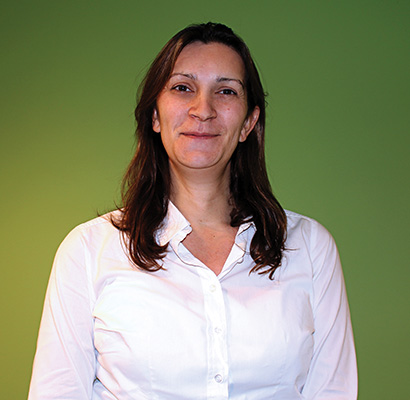
Growing Challenges
Success brought the trio a dilemma in that they now had to “Run a business” which sidetracked them from wholly focusing on their first love; creating shows and the technology involved.
They called upon Emma Marlow, who came from a strong background of managing fast growing technology companies. “I could see Green Hippo had great technology and the people involved absolutely loved it,” said Marlow, now CEO and president. “When you have those two ingredients you can always do something interesting.
“I came on board to help them grow, expand and take it up to the next level,” she adds.
Equally intriguing to Marlow was the aspect of breaking new ground. “Absolutely,” says Marlow. “I don’t think anybody was really doing this before us, though the Catalyst media servers were operating in similar territory. From the very beginning, Green Hippo has sought to better understand what our customers are trying to accomplish by establishing a close relationship with them. We then feed that back into our development environment which supports both projects at all levels”.
With the introduction of Hippotizer V4 in October 2014, Green Hippo was once again seen as staying far ahead of the competition. With a completely new hardware and software package, Hippotizer was rewritten from the ground up, adding a “load of cool features people need these days”, as Marlow says, including 3D projection mapping.
“We launched Version 4 of Hippotizer to a very unsuspecting crowd of users, who were totally unaware we had a whole new version in the making,” adds Sadler. “To this day, I can’t believe that we managed to keep it a secret for so long!”
This carried Green Hippo into 2017 and the launch of the V4+ range, which used the same market-leading software but boosted the hardware platform giving users a 40 percent boost in performance and access to all the latest technologies.
Broadening the scope of solutions to the market, Green Hippo launched a more corporate range of products called AViary Video Tools in early 2014. These were designed for simplified ultra-high resolution playback into environments by users that don’t need the full platform of live event tools, and just want to reliably play back video in large-scale environments.
To this end, every AViary product has the ability to take video playback and output mapping to new levels without compromising usability and quality, catering to the corporate and installation market.
These two lines established Green Hippo’s core range of products. Hippotizer is established as the live event, ‘Rock ‘n’ Roll’ and touring media server with the unique, instantly recognizable Green Hippo logo found, “glowing backstage on all the big gigs,” notes Marlow, “which is where the people actually making the shows happen are and that is where we want to be.”
Green Hippo launched software V4.4 at LDI 2018, introducing CrossFade on Layer and a cross fade engine for presets so an entire show can be run by just recalling presets. A frame-based workflow for media playback was added, along with Timecode sync. VideoMapper on layer, Colour Blocks and InnerLoop play mode are also now available on all Hippotizer media servers. Other new additions include a visibility controller, UV editor in the 3D Mapping tool, as well as support for Stream Deck controllers and over 80 other performance improvements.

In the Field
As a groundbreaking company, the challenge to develop and maintain a thoroughly knowledgeable work force inspired by innovation has run parallel to Green Hippo’s success. There were no books anywhere to explain how to use these tools, so the engineers at Green Hippo literally wrote the book.
“We have a whole in-house program with product specialists in the U.K. and the U.S. whose primary job is to be experts working alongside our customers to help them deliver world-class shows,” says Marlow.” Alongside the product specialists, we have ‘SuperUsers’ and ‘HippoExperts,’ a global network of talented users.”
Green Hippo also invests in upcoming talent, supporting educational facilities across the world. “A few of our staff started out in technical theater universities and have grown and developed with us. Universities such as Full Sail University, Orlando and Backstage Academy, U.K. have implemented Hippotizer into their curriculum and on productions all year round,” comments Marlow.
As for the development of people, the company has an intern program at their headquarters in the U.K., where they call people from theater, stage and technology schools to come in and work with them for up to year, first in their facility, then in the field. That combination of technical, practical and creative skills is not something that comes off the shelf.
“We inculcate them, build them up and give them exposure to our tools and industry. People that fly in that environment often come on board and become part of our community,” Marlow says.
“We also work a lot with lighting designers as consultants,” adds Marlow. “The big advantage in this to the industry as a whole is these guys bring their knowledge and experience and deliver it to the next generation.”
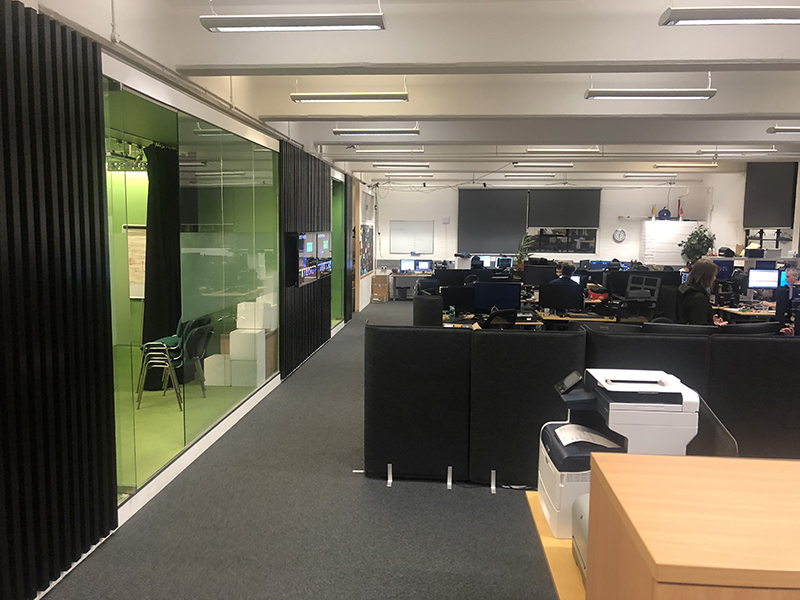
Looking Ahead
A few years ago, the live entertainment industry went quiet. Very little was spent on equipment for new shows, and it impacted most companies. Green Hippo was no exception. Westgate, Heron, Sadler, and Marlow took a deep hard look at how to secure themselves for the future and sought out a partner that understood the market, had been through similar experiences and was big enough to support continued growth. During that search they came across tvONE/ Spitfire Creative Technologies, a company that not only met their requirements but exhibited the synergy to meld them together. tvONE was looking for a growth partner as well.
tvONE specializes in video processing and signal management and distribution for the professional AV, broadcast video and digital signage markets. “Nothing changes for us,” says Marlow. “We’re still the same people producing the same products, and we can continue to focus on the creative aspect of Green Hippo to continue coming up with new solutions in our technology. Now we have a bigger family umbrella above us that has solved all the growth challenges we were starting to experience.”
“The great thing about tvONE is that they are in the same technical space as us, but we are not competitors,” says Sadler.
“I am very excited about the possibilities of being able to combine the two company’s technical expertise to create some amazing products in the future.”
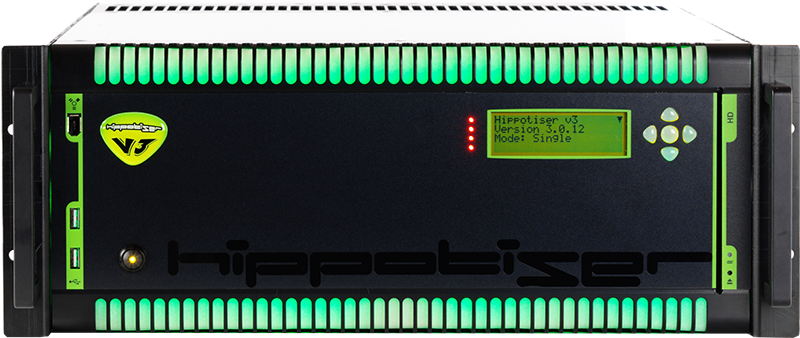
Where That Will Take Them
“These are still the early days yet, so it is hard to say what that will look like, but I think there is a great match of potentials in combining tvONE’s technology with ours,” adds Sadler.
Besides the Academy Awards, Hippotizer Media Servers are present on Eurovision, WWE, numerous cruise lines and theme parks. “We are having some exciting conversations with them, and we have a whole raft of software releases in the pipeline due to come out,” says Sadler. “These include a collection of solutions for automatic projector alignment both for complex 3D mapping projects and simple projector setups using both camera and sensor-based techniques.”
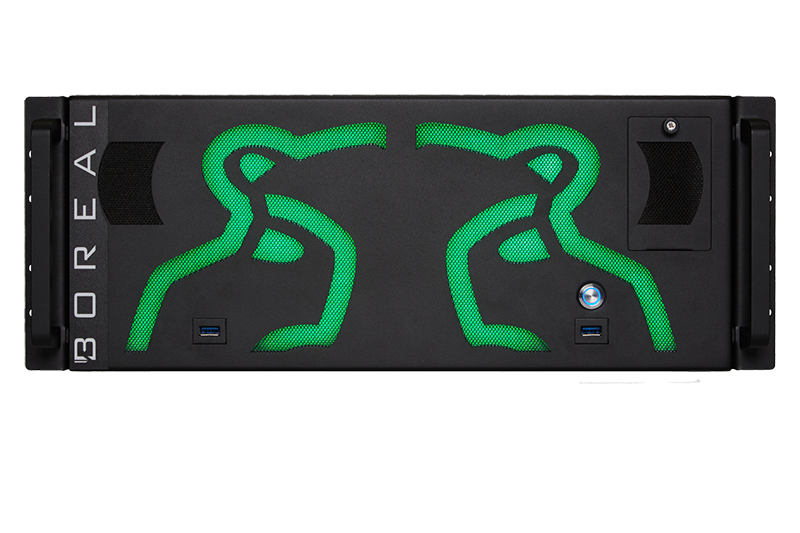
“Other new features in Hippotizer’s 3D environment will allow for much more creative freedom such as Object to Output, compositions, mapping and object motion. HippoNet, our powerful networking system, is one of our major advantages central to all our markets,” Sadler says.
“Under the Spitfire Creative Technologies umbrella alongside tvONE and Magenta brands and our staff, we are looking at a very bright future going ahead. With the recent acquisition and our (relatively) new office in Los Angeles, Green Hippo is really set to move onto the next level as a media server manufacturer and it’s really exciting to see where this will go over the next few years.”
In closing, Sadler states, “I am very proud of what Green Hippo has achieved over the years and it is a pleasure to be working with some of the best minds in the industry. Let’s just see what happens next.”
